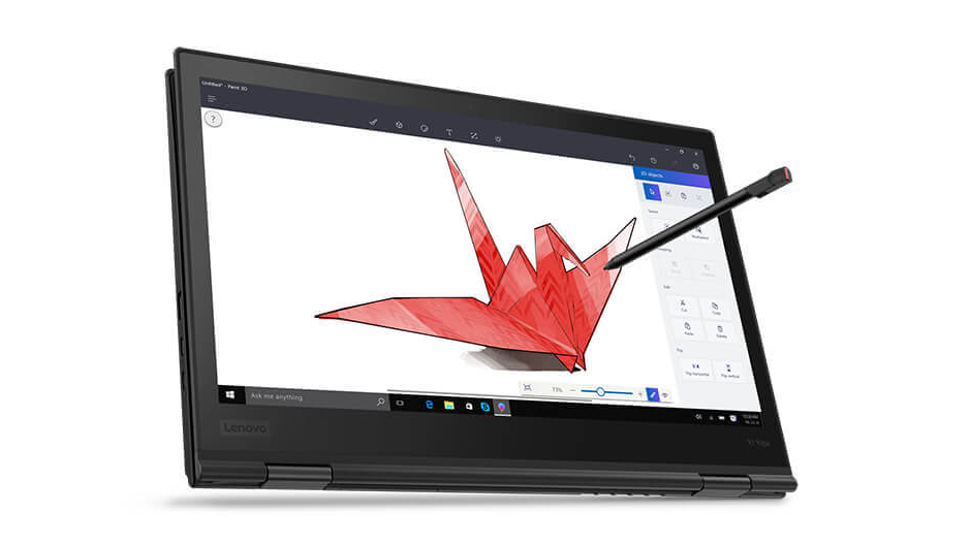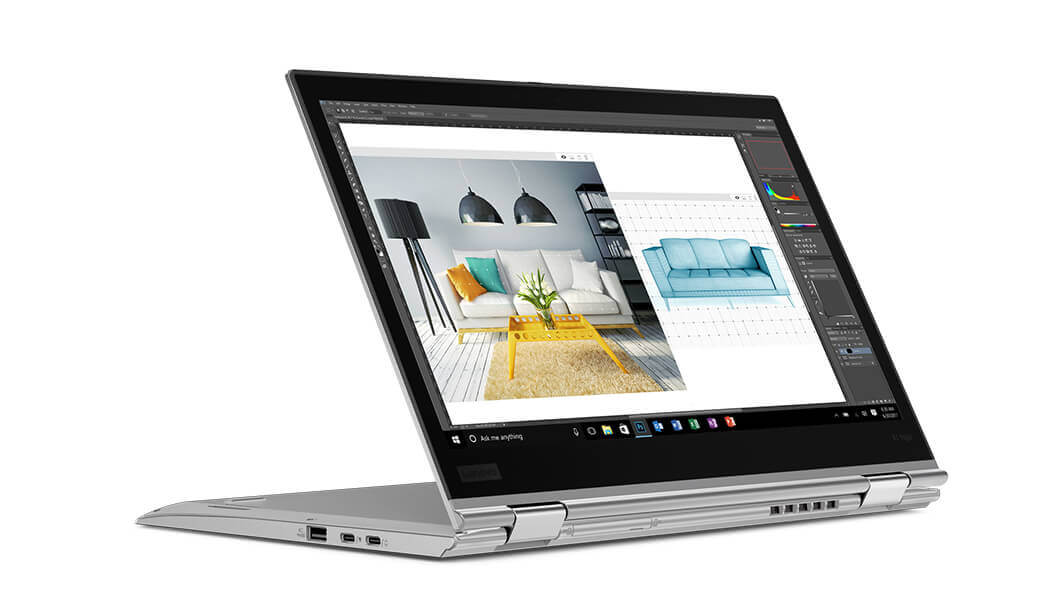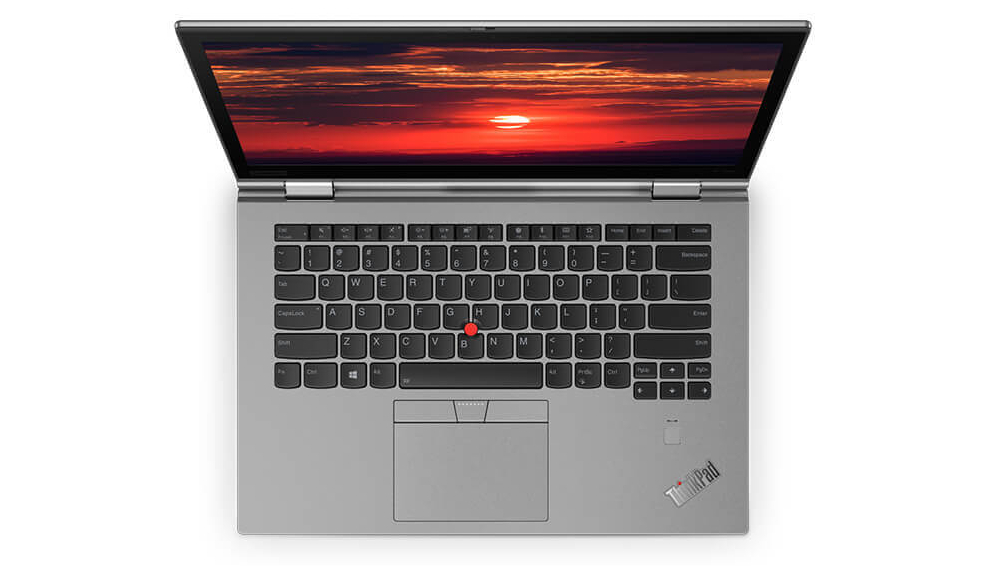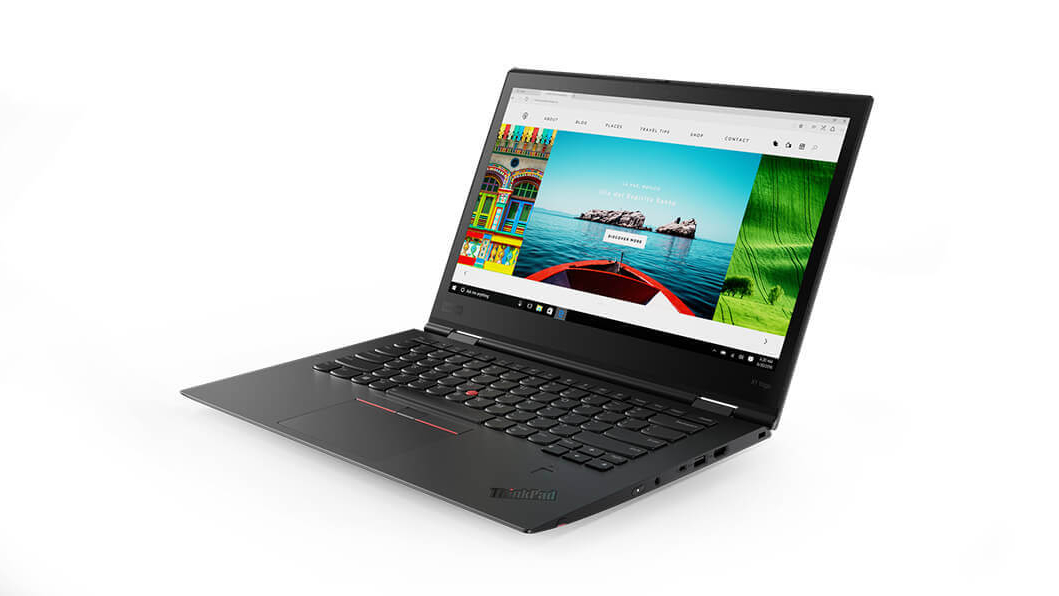Why you can trust TechRadar
Usage and performance
A machine with this level of hardware should be fast, and unsurprisingly it is.
Booting Windows and launching apps is practically instantaneous, and the only time that the machine isn’t highly responsive is when Microsoft has initiated some background upgrade exercise without asking.

The weakness of this hybrid – and all the other 8th-gen platform devices – is the UHD Graphics 620 integrated GPU. This doesn’t contribute enough considering the raw computing power that is pushing it.
Here’s how the Lenovo ThinkPad X1 Yoga (3rd Gen) performed in our suite of benchmark tests:
Passmark: 3460
Passmark CPU: 9815
CPU-Z: 455 (single-thread); 2065.2 (multi-thread)
Geekbench: 4876 (single-core); 14973 (multi-core); 22349 (compute)
Cinebench: OpenGL: 56.12 fps; CPU: 624
CrystalDiskMark: 3441MBps (read); 1995.7MBps (write)
Novabench: 1657
Atto: 3,389MBps (read, 256mb); 2,003MBps (write, 256mb)
Sisoft Sandra (KPT): 11.19
Windows Experience Index: Did not run
UserBenchmark (higher is better): 81.6
For those doing graphical tasks like CAD or design work, or using Direct Compute, need to look elsewhere for a machine with a discrete GPU, until Intel chooses to address this weakness.
Benchmarking reveals some of the best numbers we’ve seen from the Intel Kaby Lake R platform, and the NVMe storage performance here is exceptional.
The drive is a Samsung PM981, an OEM-only drive that uses its Polaris V2 controller, and 64-bit Layer TLC flash memory.
The performance crown has been taken over by the recently released Samsung 970 Pro, but in this configuration, the incorporated SSD allows the new Intel silicon to be well exploited.
A calibration test also revealed that the exceptionally crisp 2,560 x 1,440 IPS display could represent the full 100% of sRGB and AdobeRGB color gamuts. When you combine that with a static contrast ratio of over 1,000:1 and a maximum brightness of 463 lumens, it makes for one of the best quality displays we’ve seen on a laptop recently.
There is only one fly in the finely-scented ointment of the ThinkPad X1 Yoga, and that’s battery life.
Battery life
We’ve been upbeat about the X1 Yoga so far, but the battery life on this machine fails to live up to the high standard of the rest of the hardware.
Using the PCMark08 benchmark, we explored the differences between a pure performance setup and one configured for maximum possible battery life.

With performance made a priority, the X1 Yoga lasted just 4 hours 18 minutes on the Work test, and with all the power saving options ticked it stretched that to 6 hours 24 minutes.
That’s a country mile from the quoted 15 hours of battery life, whichever way you look at it.
Unless you never stop work and never answer the phone, the longevity you’ll get is probably a working day, but hardly any more than that.
We suspect that the Core i7 processor and NVMe drive are contributory factors in this mediocre result, and it may be that a Core i5 machine might well last much longer on the same battery capacity.
At least it charges quickly, having RapidCharge technology that can get the device back to 80% capacity in just 60 minutes.

Final verdict
This hybrid is superbly designed and built, but marred by a few annoying aspects that lessen the wow factor a little. The mediocre battery life hints that you’d be better off with the Core i5 version, and accounts might well agree when they see the high cost for the Core i7 powered models.
With much cheaper designs from Dell and HP that contain almost identical parts, this machine could be a tough sell at this price – even to business customers.
- Also take a look at the best business laptops of 2018
Mark is an expert on 3D printers, drones and phones. He also covers storage, including SSDs, NAS drives and portable hard drives. He started writing in 1986 and has contributed to MicroMart, PC Format, 3D World, among others.

